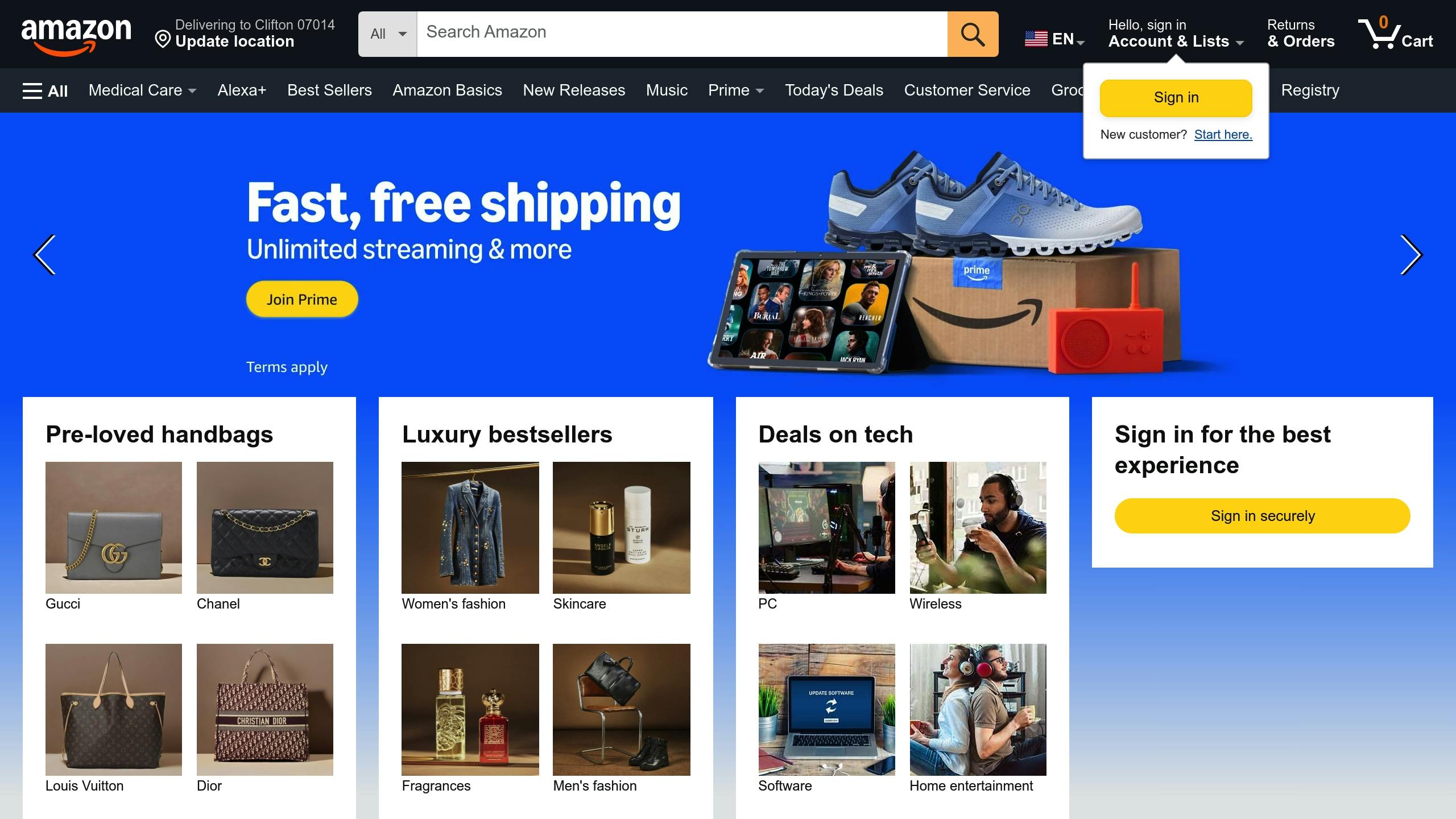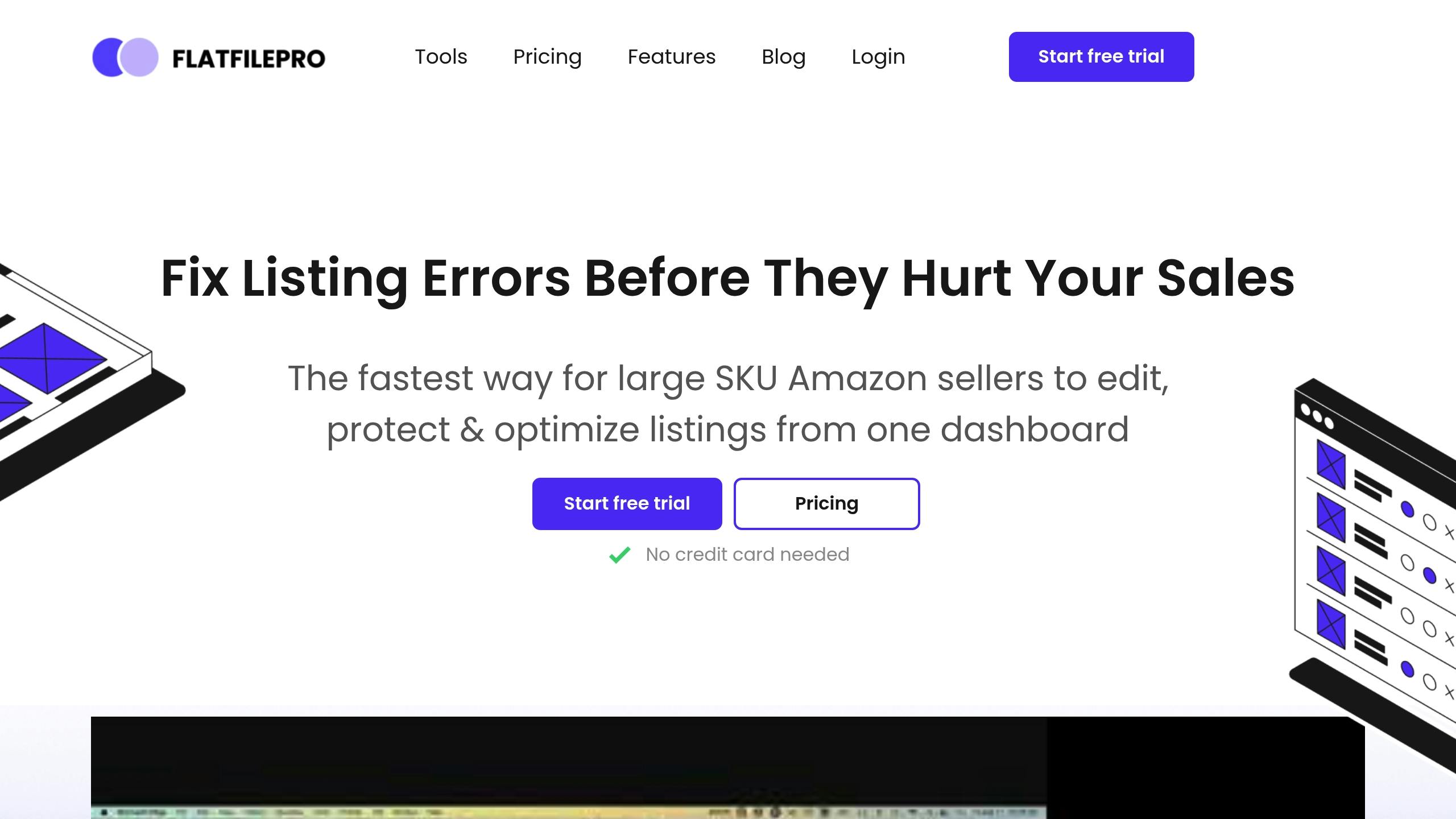Managing product listings across multiple markets can be complex, but it’s necessary to stay competitive in today’s global eCommerce world. Here’s a quick summary of the key strategies to optimize your listings:
- Centralize Your Management: Use tools like FlatFilePro to handle listings across platforms like Amazon, eBay, and Walmart from one dashboard.
- Follow Marketplace Rules: Ensure your listings meet platform-specific guidelines (e.g., title length, image requirements) and regional regulations (e.g., EU material composition, U.S. imperial measurements).
- Tailor Content for Local Markets: Adapt listings for local languages, cultural preferences, and regional shopping trends while maintaining brand consistency.
- Automate and Save Time: Use bulk editing, version control, and automated updates to reduce manual work and prevent errors.
- Track Performance Metrics: Monitor visibility (search rank), engagement (click-through rates), and sales performance to identify what’s working.
Quick Tip:
Tools like FlatFilePro simplify these tasks by automating updates, ensuring compliance, and saving time – so you can focus on scaling your business efficiently.
Let’s dive into the details of these strategies and how they can help you succeed globally.
Boost Your Sales: Mastering Amazon‘s Product Listing Optimization Tools
Marketplace Requirements Guide
Each online marketplace has its own set of rules that can directly affect how your product listings perform.
Marketplace Rules Comparison
Every major marketplace has specific guidelines for product listings, and these can differ significantly. For example, title length limits vary, image requirements often specify minimum dimensions and background rules, and platforms handle product variations, bullet points, and description lengths differently. Trying to manage all these differences manually can quickly become overwhelming.
This is where FlatFilePro comes in. Its centralized dashboard simplifies the process by automatically adjusting your content to meet the unique requirements of each marketplace. Plus, the Reflection Engine keeps an eye on your listings, ensuring they stay compliant as rules change.
Regional Rules and Standards
On top of platform-specific guidelines, regional regulations add another layer of complexity to product listings.
Here are some key regional requirements to consider:
- EU: Listings must include material composition details.
- Japan: Precise measurements in centimeters are required.
- US: Listings should use imperial measurements.
- Australia: Country-of-origin labeling is mandatory.
Regional regulations also influence listing content in other ways. For instance, the EU’s GDPR affects how customer data is handled, while California’s Prop 65 requires specific warning labels for certain products.
To stay compliant, sellers need to keep track of regulatory updates, use tools to flag non-compliant content, and maintain detailed records. Automation can make this process much easier.
FlatFilePro offers features like role-based access control, ensuring only authorized team members can make changes to listings. Additionally, its bulk editing capabilities allow sellers to quickly update multiple listings whenever requirements shift, helping maintain compliance across all marketplaces.
Multi-Market Listing Standards
Organizing and managing listings across multiple markets requires a balance between maintaining consistency and addressing local needs. Following these standards ensures precise data control and market-specific content.
Product Data Management
Keep product data organized and accurate with a centralized system. A good product data management setup should include:
- Version Control: Keep track of listing updates and fix issues quickly.
- Role-Based Access: Assign specific responsibilities to team members to reduce errors.
- Change History: Record every update to easily trace changes and correct mistakes.
Once your data is centralized, you can adjust content to align with the demands of individual markets.
Market-Specific Content Guidelines
Managing listings for different markets means adapting to local needs while staying true to your brand. Here’s what to focus on:
- Local Language: Use accurate translations that fit the cultural context.
- Regional Compliance: Follow local regulations without losing your brand’s identity.
- Seasonal Adjustments: Update listings to reflect regional holidays or shopping trends.
FlatFilePro Listing Management Tools
Using tools like FlatFilePro can simplify multi-market listing management. Ian Sells, Founder of Million Dollar Sellers, shares:
"With FlatFilePro, I’ve been able to streamline my Amazon listing process significantly. What used to take hours now takes just minutes. It’s a game-changer for my business"
FlatFilePro offers features that make managing international listings easier:
| Feature | Benefit |
|---|---|
| Global Dashboard | Oversee all marketplace listings from one interface. |
| Bulk Editing | Update multiple listings at once, perfect for seasonal campaigns. |
| Content Transfer | Automatically adjust and move content between marketplaces. |
| Error Prevention | Fill content slots to avoid vulnerabilities like black-hat attacks. |
| Version Control | Easily track changes and restore previous versions when needed. |
These tools allow you to maintain a strong, consistent brand presence while meeting the unique demands of each marketplace, boosting overall performance.
sbb-itb-ed4fa17
Product Listing Elements
Great product listings combine strong search optimization with eye-catching visuals to boost conversions. These features are essential for managing a multi-market strategy effectively.
Search-Optimized Content Writing
Crafting product listings that align with regional search habits is key. For example, in North America, titles often begin with the brand name followed by key features. In contrast, other regions may use different formats. Even terminology can vary widely – what’s called "running shoes" or "sneakers" in the U.S. might be "trainers" in the U.K. or "laufschuhe" in German-speaking areas.
Regional keyword research is crucial for improving search rankings and connecting with local audiences. Tools like FlatFilePro’s global dashboard simplify this process by helping sellers manage and distribute tailored content across markets while keeping it regionally relevant. And it’s not just about the text – strong visuals play a big role too.
Product Image Standards
High-quality images that meet both technical and regional preferences are essential for global success. In some regions, lifestyle images showing how a product is used or its size in context work best. In others, close-up shots that emphasize design details are more effective.
Using a centralized image management system, such as FlatFilePro, can streamline the process. These systems allow you to edit, track version history, and update listings efficiently. This ensures your brand stays consistent while meeting the specific requirements of each marketplace.
Results Tracking and Updates
Keep an eye on global listings using essential metrics and automated tools. Tracking performance is just as crucial as customizing listings to maintain a strong global presence.
Key Performance Metrics
Focusing on the right metrics helps pinpoint which listings need improvement and which strategies are delivering results. Successful sellers often monitor these indicators:
| Metric Category | Key Indicators | Why It Matters |
|---|---|---|
| Visibility | Search rank, impressions | Shows how easily listings are found |
| Engagement | Click-through rate, conversion rate | Measures how effective listings are |
| Sales Performance | Revenue, units sold, profit margins | Tracks financial outcomes |
| Customer Response | Reviews, ratings, questions | Reflects buyer satisfaction |
These metrics provide a foundation for analyzing performance across different markets.
Performance Analysis Methods
Analyzing performance across marketplaces reveals regional trends and highlights what’s working – or not. By examining this data, sellers can spot problems early and address them before they escalate. Case studies have shown how this proactive approach can make a big difference.
Once issues are identified, automation simplifies the process of fixing them.
Automated Listing Management
Manually tracking listings across multiple marketplaces can be time-consuming and prone to mistakes. That’s where tools like FlatFilePro come in. It offers features such as:
- Version control
- Bulk editing
- Error detection
- Centralized global management
For $149/month, FlatFilePro helps sellers maintain consistency across marketplaces, avoid revenue loss, and comply with regional requirements. By automating updates, sellers can cut what used to take hours down to just minutes, making scaling operations much more efficient.
Conclusion: Multi-Market Success Steps
Achieving success across multiple markets requires a balance of centralized management and localized adjustments. Top-performing brands focus on three key areas: structured organization, adapting to regional needs, and using automation to simplify processes.
To ensure consistent and effective listings, it’s important to have reliable systems in place. Streamlined workflows help maintain quality and efficiency, as demonstrated by leaders in the industry.
Here are the core steps to follow for success in multi-market operations:
- Centralize control with version management: Keep product data consistent while allowing for regional tweaks and quick fixes when needed.
- Use automated tracking systems: Continuously monitor listing performance across all platforms to identify and resolve issues promptly.
- Adopt specialized tools: Platforms like FlatFilePro can simplify the process of managing listings across various regions.
- Promote team collaboration: Define clear access permissions and create effective communication systems for global teams.
Maintaining version control is especially important. It helps teams keep track of changes, ensuring that listings remain accurate and cohesive across different marketplaces.



